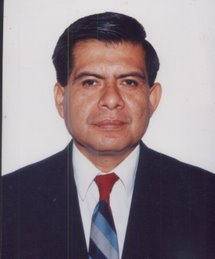 PLAZA DE ARMAS DE TINGO MARÍA-PERÚ
PLAZA DE ARMAS DE TINGO MARÍA-PERÚFernando Gonzáles Huiman 1/
Luis Mansilla Minaya 2/
Wilberth R. Reyes Salazar 4/
RESUMEN
A fin de determinar los niveles óptimos de la fertilización P-K en el rendimiento de grano del Frijol Castilla, Var. CB 88, se condujo experimentos en dos condiciones de suelo en la localidad de Tingo María, en los meses de julio a diciembre del 2000. Se evaluaron 4 niveles de P y 4 niveles de K dispuestos en un DBCA con arreglo factorial, encontrándose que la sola aplicación de P al suelo, no garantiza la obtención de incrementos en los rendimientos, mientras que para el caso del K se requieren aplicaciones hasta de 120 kg.ha-1. Para las condiciones del experimento, se hace necesaria la aplicación de ambos elementos en forma balanceada para lograr mejoras en los rendimientos; de este modo se ha encontrado que para el caso del Fundo, cuando se le adiciona 40 kg.ha-1 de K2O el nivel óptimo agronómico se obtiene con la aplicación de 71 kg.ha-1 de P2O5 y cuando se duplica el nivel de K el óptimo se obtiene con 85 kg.ha-1 de P2O5. Para el caso de Brisas del Huallaga, un nivel de 40 kg.ha-1 de K2O requeriría 75 kg.ha-1 de P2O5 y un nivel de 80 kg.ha-1 de K2O requeriría 77 kg.ha-1 de P2O5. Similarmente, cuando se adiciona 40 kg.ha-1 de P205 el óptimo económico se obtiene con 66 kg.ha-1 de K2O y para 80 kg.ha-1 de P2O5 se requiere la aplicación de 90 kg.ha-1 de P2O5 para el caso del Fundo, mientras que para Brisas 40 kg.ha-1 de P2O5 requerirían 68 kg.ha-1 de K2O y 80 kg.ha-1 de P2O5 requerirían 102 kg.ha-1 de K2O para alcanzar el óptimo agronómico. Igualmente, mejores respuestas se obtuvieron al abonamiento potásico que al fosforado en las dos localidades estudiadas.
__________________________________________________________________ 1/ Ingeniero Agrónomo. Docente Asociado a DE de la Universidad Nacional Agraria de la Selva. Área de Cultivos, fsgh_dito@yahoo.es fsghdito@gmail.com
2/ Ingeniero Agrónomo. Docente Asociado a DE de la Universidad Nacional Agraria de la Selva. Área de Suelos, lmansillam@hotmail.com
3/ Ingeniero Agrónomo. Extensionista.
____________________________________________________________________
ABSTRACT
In order to determine the good levels of the fertilization P - K in the yield of grain of the Bean Castile, Var. CB 88, he/she behaved experiments under two floor conditions in the town of Tingo María, in the months of July to December of the 2000. 4 levels of P and 4 Ievels of willing K were evaluated in a DBCR with factorial arrangement, being that the single application of P to the floor, doesn’t guarantee the obtaining of increments in the yields, while for the case of the K applications are required until of 120 kg.ha-1. For the conditions of the experiment, it becomes necessary the application of both elements in form balanced to achieve improvements in the yields; this way he/she has been that for the case of the l am Founded, when 40 kg.ha-1 of K2O the agronomic good level is added it is obtained with the application of 71 kg.ha-1 of P2O5 and when the level of K the good one is duplicated it is obtained with 85 kg.ha-1 of P2O5. For the case of Breezes of the Huallaga, a level of 40 kg.ha-1 of K2O would require 75 kg.ha-1 of P2O5 and a level of 80 kg.ha-1 of K2O would require 77 kg.ha-1 of P2O5. Similarly, when 40 kg.ha-1 of P2O5 the good one is added economic it is obtained with 66 kg.ha-1 of K2O and 80 kg.ha-1de stops P2O5 the application of 90 kg.ha-1 of P2O5 it is required for the case of the l am Founded, while it stops Breezes 40 kg.ha-1 of P2O5 68 kg.ha-1 of K2O and 80 kg.ha-1 of 4 P2O5 they would require 102 kg.ha-1 of K2O they would require to reach the good one agronomic. Equally, better answers were obtained to the security potásico that to the fosforado in the two studied towns.

No hay comentarios:
Publicar un comentario